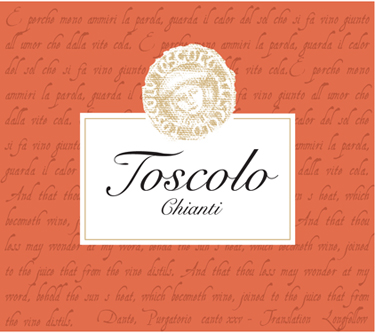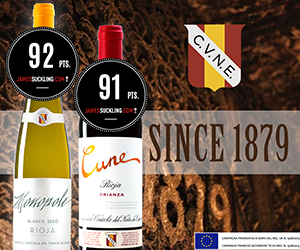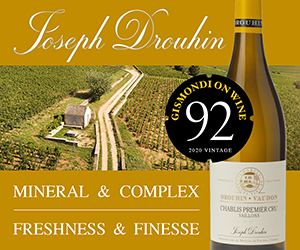In the bizzaro world of wine, producers and wineregion representatives come and go through Vancouver and sometimes never meet awine-buying consumer.
Their days are filled with meetings and tastings withmonopoly buyers (BCLDB), private retailers, media and restaurant buyers. It's astrange dance given the varied interests of each wine and it's frustratingbecause often what is discovered in the moment may not be available for months.
What we learned first-hand this week from theChianti Classico Wine Consorzio is there will be a change of regulations at theupper end of the famed region's wine, adding what some think is a much neededpointy end to its pyramid of quality. Chianti Classico Gran Selezione is thenew kid on the block, and it sits at the peak of the production chain. Next inline is Chianti Classico Riserva, followed by the youngest wine in the marketlabelled Annata. All other wine made in the region of Chianti Classico that donot use the preceding monikers are labelled under IGT regulations.
The term classico has always referred to theoldest, some might say genuine, zone of production in any approved wine growingarea in Italy. In this case, Chianti Classico speaks to the area betweenFlorence and Siena with vineyards spread across 14 municipalities. From aconsumer's point of view, Chianti Classico is easily recognized in wine storesby its celebrated Black Rooster symbol on the bottle.
It is estimated that between six and eight per centof all wines made in Chianti Classico will be eligible to use the new ChiantiClassico Gran Selezione DOCG. Specifically, they must be produced from 100 percent estate-grown fruit aged a minimum of 30 months of which at least sixmonths is in bottle. There are some technical parameters that must be met,including minimum alcohol 13.5 per cent, plus 26 g/L of dry extract (a measureof the intensity of the wine). That focus will be on single vineyard or blocksites.
Interestingly, you can look at Chianti Classicoproducers in two ways: there are those with a Bordeaux mentality who operate asa large single vineyard estate and then others who are more Burgundian, farmingsingle block by single block. Both seem to work well.
Chianti Classico Riserva rules remain the same: aminimum 24 months of aging, with 12.5 per cent alcohol and minimum dry extractlevels of 25 g/L, as do Chianti Classico Annata regulations with a minimum 12months of aging, 12 per cent alcohol and minimum dry extract levels of 24 g/L.
According to the latest regulations, the minimumpercentage of Sangiovese in Chianti must be 80 per cent. Other varietiesallowed include indigenous regional grapes such Canaiolo, Malvasia andColorino, as well as international varieties that boast a long history in theregion, namely Cabernet Sauvignon and Merlot. Since 2006, the use ofwhite-grape varieties, such as Trebbiano and Malvasia are no longer allowed.
Chianti Classico is riding a wave of good to verygood vintages since 2003, and they are just now reaping the benefits of amaster replanting scheme that has seen the region whittle scores of oldSangiovese clones down to seven or eight types that are really having an impacton quality.
With more than 600 members, including 350 bottlers,the Chianti Classico Wine Consortium now represents 95 per cent of the entiredenomination. No mean feat in a creative country often described as 60 millionpeople all pulling in a different direction.
In the meantime, make a mental note of the monikerChianti Classico Gran Selezione, it could be in a store near you by Christmas.
Toscolo Chianti 2011, Tuscany, Italy
Price $20 Everything Wine, Legacy, private wine stores only
UPC 726452001210
Score 87/100
Remarks A Neil Empson selection Toscolo
is a Renaissance word for 'Tuscan boy'. The nose is slightly reduced with
earthy, black fruit but it blows off with a bit of time. The attack is dry and
round with good ripeness and spicy, gamy cherry fruit flavours. This is a very
solid spaghetti red for the price. Be sure to splash decant the bottle or give
it some time in the glass.
Antinori Peppoli Chianti Classico 2009, Tuscany, Italy
Price $29
UPC 8001935001362
Score 89/100
Remarks Typically peppery, meaty, spicy,
floral nose with plum, olive, liquorice aromas. The attack is dry and Tuscan
with more plum, black cherry, liquorice, spice and smoky, savoury, meaty,
vanilla flavours. Fine length and concentration with finesse. Drink now with
mushroom pasta dishes of cellar for three more years.
Ruffino Chianti Classico Riserva Ducale (Tan Label) 2008, Tuscany, Italy
Price $30
UPC 8001660109753
Score 90/100
Remarks The Riserva Ducale is an 80/20 mix of sangiovese and a combination of cabernet sauvignon and merlot grown at the Gretole and Santedame estate. The 08 is an excellent version Classico with its fragrant, floral, red fruit nose. The palate is a mix of violets, plums and stony red fruits with spice, dried herbs and tobacco. You could easily cellar this another five years or serve now with grilled lamb.
Villa Antinori Toscana IGT Rosso 2008, Tuscany, Italy
Price $27
UPC 08001935001522
Score 87/100
Remarks The IGT designation speaks to the
grape blend: 55% sangiovese, 25% cabernet sauvignon, 15% merlot and 5% syrah.
Look for a smoky, peppery, savoury, black cherry nose with meaty, sage, cedar,
liquorice aromas. The palate is round with light tannins and savoury, peppery,
tobacco, meaty, black cherry and herb flavours.
A bit rustic but will be fine with most grilled items of the barbecue.
Rocca delle Macìe Chianti Classico 2010, Tuscany, Italy
Price $20
UPC 8002305009506
Score 88/100
Remarks Classic earthy, tobacco, pepper,
meaty, chocolate, wild berry nose with liquorice root and dried herbs. The
attack is fresh and juicy with a soft mid-palate and light tannins. Black
cherry, plum, liquorice, tobacco, earthy, spicy, light vanilla and resin
flavours. Well made easy-sipping style with five percent merlot added to the
mix to offset the acidity. Perfect with grilled chicken.
Frescobaldi Castello di Nipozzano Riserva Chianti Rufina 2008, Tuscany, Italy
Price $23; $15 375mL
UPC 8007425000181
Score 88/100
Remarks This wine has proven it can age
effortlessly so enjoy its spicy, black liquorice, meaty, peppery, black cherry
nose but give some time to really impress. On the palate you will note a sense
of freshness and elegance along with smoky, meaty, tobacco, prune, peppery, black
cherry, orange peel and dried fig flavours. Fine intensity you can enjoy now
with beef dishes or mushroom risotto or wait five to seven years for it to
mellow out.

 quicksearch
quicksearch






